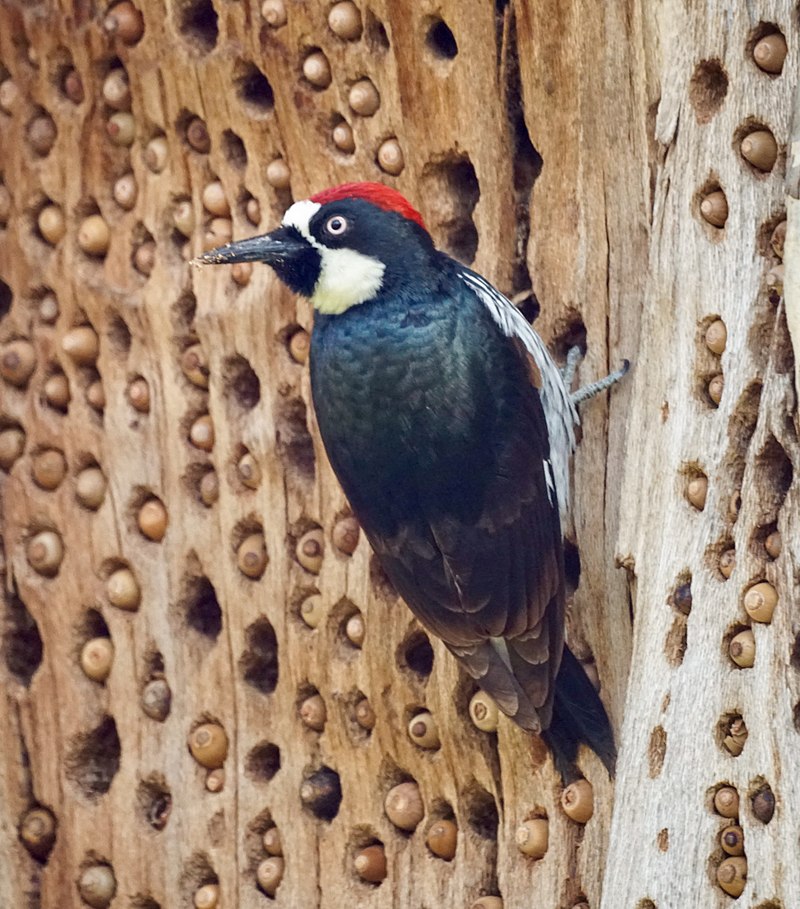There are over 240 species of woodpeckers worldwide in the family Picadae (International Ornithological Committee/IOC) Here are some interesting facts about them:

- The “pileated” in Pileated Woodpecker refers to the top of their head (called a pileum) which is red, ala Woody Woodpecker.
- They have a flap flap glide undulating wing beat that helps them navigate among trees and land on vertical tree trunks.
- All are cavity nesters, as in they nest in holes in trees. They are considered “primary” cavity nesters because they can excavate their own holes.
- Nest cavities can be deep (e.g., the Black Woodpecker carves out a hole that is 15″ deep) and high up in a tree (e.g., in the case of the Black Woodpecker, about 80 feet up.)
- They do not bring nesting material into the cavity, but may leave a layer of wood chips on the bottom.
- Hummingbirds may follow Yellow-bellied sapsuckers around. When the woodpecker drills a hole in a birch tree before it flowers, the holes exude sucrose, which also forms a “sap trap” for insects like bees. Eventually the extensive drilling can kill a tree.
- Woodpeckers “drum” to stake out territory and call for a mate. Each species has its own unique rhythm.
- Acorn Woodpeckers are unusual because they live in highly structured families of a dozen or so birds, each group claiming about 15 acres of oak trees. Each groupd will have 3 or 4 breeding males and females. More than one female will lay eggs in a single nest, and they synchronize their laying so they all hatch together. The male tends the eggs at night. The rest are older siblings/aunts/uncles who help out. Acorns are stored (which are high in vitamins, minerals, fats and proteins) in pre-drilled holes in the trunk of the trees. As they acorns dry, they shrink, so the birds test and turn and pound them into the hole to keep they snug, and move them in needed. Babies are born naked and blind, and are fed acorn mash. All have male plumage until their first winter.
- Lewis’s Woodepcker is named after the explorer Lewis Meriwether. They are unusual because they catch prey on the wing (known as “hawking” – similar to Mountain Bluebirds and Tree Swallows.)
- Hila Woodpecker’s nest in saguaro cactuses. They excavate holes in between the spines, and have to wait several months for the interior to dry to a leathery consistency.
- Andean Flickers of Argentina nest in clay cliffs and banks. They probe the soil for worms and insects. Mates forage close together, and call back and forth to stay in constant contact. They may nest in small colonies with Blue & White Swallows, which forage in their air and thus occupy a different ecological niche.
- Red-bellied Woodpeckers have been moving steadily north for teh last 70 years, expanding their range from the American southeast to Boston and the Southern Great Lakes by 1980, and then all the way to Quebect and Ontario by 2000.
REFERENCES AND MORE INFORMATION:
The primary source of information on this page was Woodpeckers: The Hole Story, a wonderful documentary on PBS
